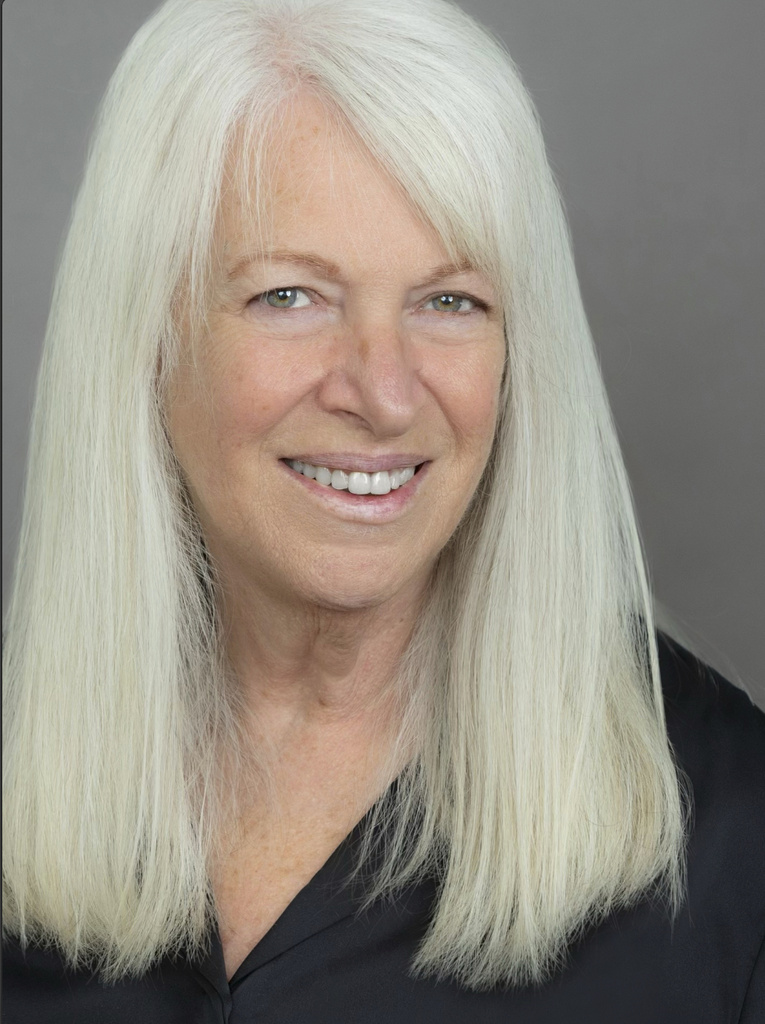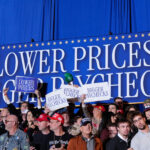LA Times Faces Editorial Board Resignations Over Endorsement \ Newslooks \ Washington DC \ Mary Sidiqi \ Evening Edition \ Three senior Los Angeles Times editorial board members, Robert Greene, Karin Klein, and Mariel Garza, have resigned after the paper’s owner, Dr. Patrick Soon-Shiong, prevented an endorsement for Democratic Vice President Kamala Harris. Their resignations reflect mounting tensions over the role of editorial independence in the paper’s coverage of the 2024 presidential race.

LA Times Editorial Board Resignation Controversy Quick Look
- Resignations Sparked: Three editorial board members resign over blocked endorsement.
- Owner’s Influence: Dr. Patrick Soon-Shiong opposes endorsing any presidential candidate.
- Push for Neutrality: Soon-Shiong advocates for impartial analysis over partisan support.
- Journalistic Ethics: Resigning editors express concerns about compromising editorial independence.
- Election Season Impact: Controversy highlights challenges in balancing ownership and journalistic autonomy.
Deep Look
The Los Angeles Times is navigating a significant editorial controversy after three high-profile resignations from its editorial board, raising critical questions about the influence of ownership on journalistic independence. Longtime board members Robert Greene, Karin Klein, and Mariel Garza announced their resignations last week following owner Dr. Patrick Soon-Shiong’s directive to remain neutral in the upcoming 2024 presidential election. Soon-Shiong’s decision, which blocked the board’s planned endorsement of Democratic Vice President Kamala Harris, has ignited broader discussions about the role of endorsements, journalistic ethics, and the tension between editorial autonomy and ownership authority within news organizations.
The resignations began with Mariel Garza, the editorial page editor, who cited Soon-Shiong’s stance on neutrality as her primary reason for stepping down. Garza, in an interview with the Columbia Journalism Review, emphasized her concerns about the editorial board’s silence on what she described as a consequential election. “I am resigning because I want to make it clear that I am not OK with us being silent,” Garza said. “In dangerous times, honest people need to stand up. This is how I’m standing up.” According to Garza, the board had crafted a plan to endorse Harris, with the editor herself drafting the outline for a proposed endorsement editorial. However, Soon-Shiong’s directive to avoid taking a position ultimately halted their efforts, prompting her resignation.
The following day, editorial board members Robert Greene and Karin Klein also stepped down. Greene, a Pulitzer Prize-winning writer known for his in-depth editorials on government issues, Los Angeles County, and environmental policy, expressed “deep disappointment” over the board’s shift toward neutrality in a statement shared with the Columbia Journalism Review. He highlighted that Soon-Shiong’s directive ran counter to the board’s role, which he believes should involve taking a stand on issues of public significance. “It hurt particularly because one of the candidates, Donald Trump, has demonstrated such hostility to principles that are central to journalism—respect for the truth and reverence for democracy,” Greene wrote.
Soon-Shiong’s decision, he acknowledged, was within his rights as owner but was nonetheless disheartening for journalists who see editorial boards as vital to providing informed, persuasive stances on current issues. Greene further explained that, unlike the news division, the editorial board is tasked with forming arguments and advocating for specific views, not presenting a balanced policy analysis. His resignation reflects a concern shared by many in the industry: that editorial boards should be able to maintain independent judgment, especially on matters of national importance.
Karin Klein, another longtime member of the editorial board, voiced similar sentiments. Posting her resignation on Facebook, Klein said that she was troubled by Soon-Shiong’s recent comments on X (formerly Twitter) suggesting that he had simply “advised” the board to provide a neutral policy overview. Klein found this stance at odds with the editorial board’s purpose, which she described as championing a definitive stance rather than offering impartial analysis. “News side does an excellent job of neutral analysis. That’s not an editorial,” she wrote, highlighting her belief in the distinct roles of news and opinion divisions.
The Owner’s Perspective: Soon-Shiong’s Call for Neutrality
Soon-Shiong responded to the backlash in an interview with Spectrum News, clarifying his intention was to foster a nonpartisan approach rather than censor the board. According to Soon-Shiong, his suggestion was rooted in the desire to provide readers with a comprehensive view of each candidate’s policies, allowing them to make their own decisions. “As an owner, I’m on the editorial board, and I shared with our editors that maybe this year we have a column, a page, two pages, if we want, of all the pros and all the cons and let the readers decide,” he explained.
Soon-Shiong’s vision is to publish a nuanced, balanced assessment of Harris and Trump, an approach he feels would contribute to more constructive public discourse. “I want us desperately to air all the voices on the opinion side, on the op-ed side,” he said. As an independent voter, he emphasized his desire for the Times to avoid aligning with a single candidate to prevent further divisiveness among readers. “I don’t know how people view me politically, but I consider myself an independent,” he added, underscoring his aim to maintain neutrality in a politically polarized climate.
Inside the Editorial Board’s Response
However, Soon-Shiong’s statements have met with pushback from current and former editorial board members. Editorial writer Tony Barboza, who remains with the Times, countered Soon-Shiong’s claims in an internal post, stating that the board had indeed intended to endorse Harris and had prepared a series of editorials leading up to the endorsement. “All of it was killed,” Barboza wrote, expressing his concerns over the framing of the decision. He indicated that Soon-Shiong’s recent statement on X may misrepresent the situation, with the owner’s intervention rather than the board’s independent choice resulting in the decision not to endorse.
Greene expanded on this point in his resignation, disputing Soon-Shiong’s claim that the editorial board had willingly chosen silence. Greene emphasized that the board’s role is fundamentally distinct from the news side, explaining, “A policy analysis would fall under the news side of the paper. The purpose of an editorial board is to take a stand and defend it persuasively.” His departure, he noted, was rooted in his belief that the board was forced into silence and that Soon-Shiong’s assertion that this choice came from within the board was inaccurate.
The Broader Implications of Editorial Neutrality
The Los Angeles Times is now facing a critical juncture as these resignations draw attention to the importance of editorial independence in a time of political division. Traditionally, editorial boards serve as the opinion voice of a publication, issuing endorsements based on values that reflect the publication’s guiding principles. Endorsements, particularly during presidential elections, are common practice for newspapers, including The New York Times, The Washington Post, and The Wall Street Journal. These endorsements are often viewed as a service to readers, providing insights rooted in journalistic ethics and editorial judgment.
However, in recent years, several media organizations have shifted their approach to endorsements, with some choosing to scale back or eliminate them altogether. Critics argue that endorsements may fuel political polarization, while proponents maintain that endorsements hold value by openly communicating the editorial board’s perspective. The situation at the Los Angeles Times highlights this tension, underscoring the complexity of navigating editorial independence in an era marked by heightened scrutiny over media bias and ownership influence.
The Future of the LA Times Editorial Board
The resignations have prompted discussions about the future role of the Los Angeles Times editorial board. For newspapers with influential editorial voices, finding a balance between ownership’s strategic vision and the editorial board’s independence is essential for maintaining credibility. The editorial board’s recent experiences reflect a broader dilemma within journalism, as media outlets grapple with balancing impartial analysis with strong, values-driven advocacy in an increasingly polarized political landscape.
The fallout from these resignations could have long-lasting implications, particularly as Los Angeles prepares for the 2024 presidential election and the media landscape continues to evolve. If the Times moves forward with Soon-Shiong’s vision of a neutral policy review, it will join a growing number of news outlets rethinking endorsements. Alternatively, it may reassert its role as an advocate for positions it deems vital to the public interest. As the media world watches this situation unfold, the outcome may shape how newspapers approach the challenge of reconciling ownership influence with editorial independence.
LA Times LA Times LA Times LA Times LA Times







